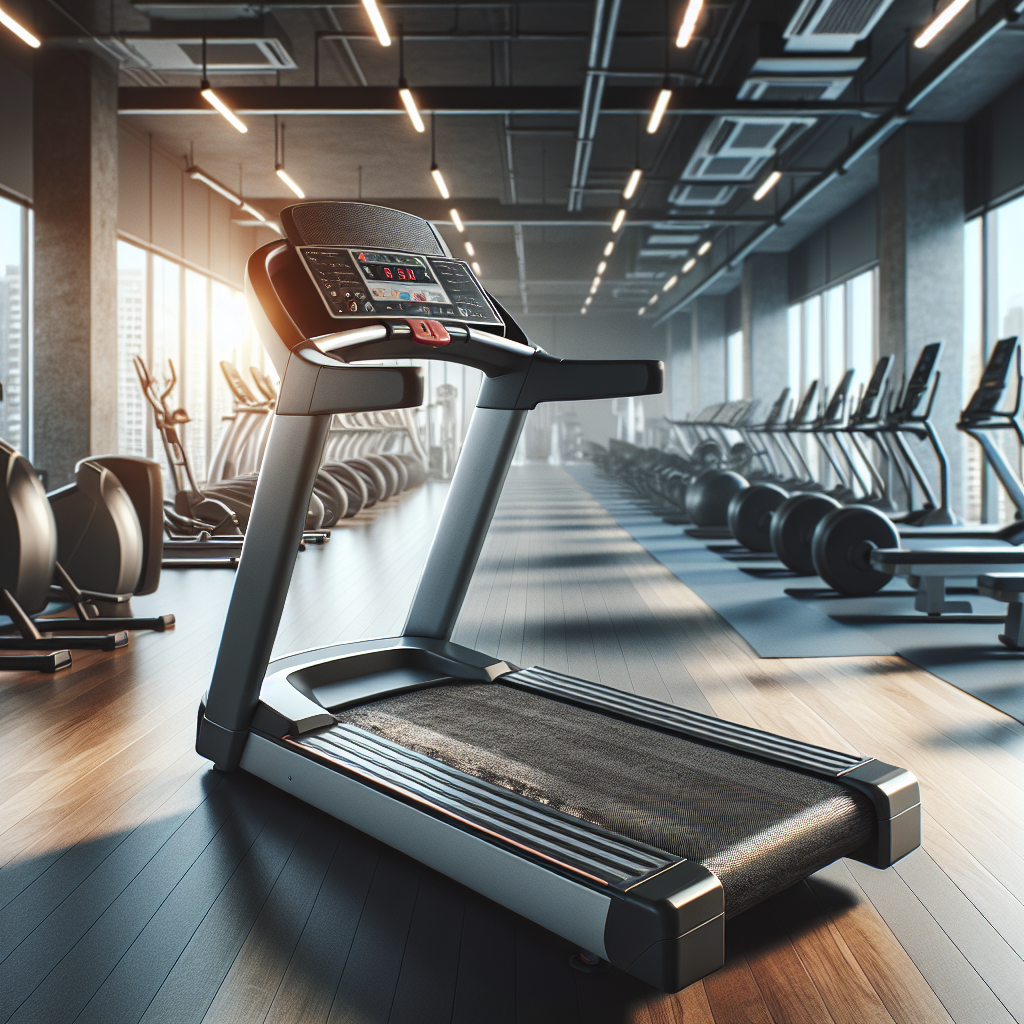Maintaining the optimal performance of your treadmill necessitates regular attention to its most critical component – the running belt. Over time, the belt can suffer from wear and tear, affecting the smoothness and safety of your workouts. Treadmill running belt replacement is a vital maintenance task that ensures the longevity and efficiency of your machine. It’s not just about preserving the equipment; it’s about providing gym-goers and residents with a reliable and enjoyable exercise experience.
Understanding the signs of a worn-out belt and knowing when to replace it is crucial. Common indicators include uneven wear, slipping, or a frayed and noisy belt. If left unattended, these issues can lead to potential safety hazards and costly repairs. That’s why recognizing the right time for treadmill running belt replacement is essential for gym operators, particularly those in condominiums, hotels, and health clubs, where equipment downtime is not an option.
Whether you’re a facility manager at a university gym or a maintenance supervisor at a residential complex, ensuring your equipment is in top condition is a priority. Contact us today to ensure your gym equipment is always in top condition! Our expertise extends to the selection of high-quality replacement belts and the precision with which they are installed, guaranteeing a seamless transition to a newly outfitted treadmill.
Signs Your Treadmill Belt Needs Replacement
Attentiveness to the condition of your treadmill’s running belt is paramount in ensuring a safe and effective workout environment. There are several tell-tale signs that indicate the necessity for a treadmill running belt replacement. Firstly, if you notice that the belt is excessively worn or has visible tears, it’s a clear sign that the belt’s integrity is compromised. Additionally, a belt that has started to fray along the edges can catch on the treadmill’s components, leading to further damage both to the belt and the machine.
Another common indicator of a belt in need of replacement is a significant change in the treadmill’s performance. This could manifest as a belt that slips or sticks during use, which not only disrupts the user’s rhythm but also poses a risk of injury. In some cases, the centering of the belt might become problematic, causing it to drift to one side, which can lead to uneven wear and potential safety issues.
Furthermore, if the treadmill starts making unusual noises or the belt requires constant re-tensioning, these are signs that the belt may be stretched out or losing its elasticity. Lastly, an increase in the amount of maintenance required to keep the belt operational, such as frequent lubrication, is a good indication that the belt is nearing the end of its lifecycle and should be evaluated for replacement.
Choosing the Right Replacement Belt for Your Treadmill

Selecting the correct replacement belt for your treadmill is a critical step in maintaining the machine’s performance and longevity. To ensure compatibility and optimal function, it is important to consider several factors. Measurements are fundamental; the belt must precisely match the dimensions of your treadmill to avoid improper fit that can lead to malfunction or injury. Therefore, accurately measure the width and length of your current belt or consult the treadmill’s manual for specifications.
Material quality is another crucial aspect. A belt made of high-grade, durable materials can withstand the rigors of intensive use and last longer. Look for belts with a thick, multi-ply construction and a textured surface that provides adequate grip and stability during workouts. Additionally, consider the belt’s thickness, as a thicker belt typically offers more cushioning and noise reduction, enhancing the user’s comfort and experience.
Lastly, take into account the belt’s compatibility with your treadmill’s motor and frame. A belt that is too heavy or creates too much friction can strain the motor, leading to overheating and potential breakdowns. It’s also wise to consider belts with pre-lubricated layers or those that come with a maintenance kit, as this can simplify the initial installation and ongoing upkeep. By carefully selecting a belt that aligns with these criteria, you can ensure a smooth, efficient, and safe running experience on your treadmill.
Step-by-Step Guide to Replacing Your Treadmill Belt
Replacing a treadmill belt may seem daunting, but with the right tools and a systematic approach, it can be a straightforward process. First, gather the necessary tools, typically including a screwdriver, an Allen wrench, and, if available, a belt replacement kit from your treadmill’s manufacturer. Before starting, make sure to unplug the treadmill to avoid any electrical hazards.
Begin by removing the motor hood to gain access to the motor and drive belt. Carefully loosen the bolts or screws that secure the hood and set it aside. Next, loosen the rear roller bolts to release the tension on the belt. This allows you to lift the belt from the deck. If your treadmill has side rail covers, you may need to remove them as well.
Slide the front roller out of its position to free the belt from the treadmill. Take this opportunity to clean the deck and rollers, removing any debris that may have accumulated. Place the new belt around the front roller and secure it back into position, ensuring that it is centered on the deck.
Re-tension the belt by tightening the rear roller bolts, but be careful not to over-tighten. The belt should be tight enough that it doesn’t slip, but loose enough to allow a lifted corner of around 2-3 inches. Once the belt is correctly tensioned, test the alignment by running the treadmill at a low speed and making any necessary adjustments.
Reattach the motor hood and side rail covers if they were removed. It’s recommended to lubricate the belt according to the manufacturer’s specifications to reduce friction and wear. Finally, test the treadmill for a few minutes to ensure it operates smoothly, and make any final adjustments to the belt tension and alignment. With patience and attention to detail, your treadmill will be up and running with a new belt in no time.
Troubleshooting Common Issues After Belt Replacement

After replacing a treadmill running belt, you may encounter a few common issues that can typically be resolved with some simple troubleshooting. If the treadmill belt slips during use, it’s often a sign that the belt tension needs adjustment. Tighten the rear roller bolts equally on both sides, just enough to stop the slipping, but be cautious to avoid over-tightening, as this can cause excessive wear.
A misaligned belt is another frequent challenge. If the belt drifts to one side, adjust the tension on the rear roller bolt on the opposite side of the drift. Make small adjustments while the treadmill is running at a slow speed until the belt is centered on the deck. It’s critical to make adjustments in small increments to prevent overcorrecting.
If you notice an unusual noise or vibration, check to ensure that all components were reassembled correctly and that no tools or loose parts are left inside the motor area. Also, verify that the belt is properly aligned and tensioned, as an overly tight belt can cause the motor to work harder, creating noise and potential overheating.
In some cases, you may experience an increase in motor load, which could be indicated by a change in the sound of the motor or the treadmill’s speed not corresponding to the settings. This can happen if the belt is too tight or if there’s insufficient lubrication between the belt and deck. Ensure the belt can lift 2-3 inches at the edges and apply a suitable lubricant as directed by your treadmill’s manufacturer.
Lastly, if the treadmill won’t start after a belt replacement, double-check all electrical connections, ensure the safety key is in place, and inspect any fuses or breakers according to the treadmill’s manual. Should these issues persist or if you’re uncomfortable performing these adjustments, it’s advisable to seek professional assistance to maintain the safety and integrity of your treadmill.
Maintaining Your Treadmill to Prolong Belt Life
Maintaining your treadmill is crucial to prolong the life of the running belt and ensure the safety and efficiency of your workouts. Regular cleaning is essential; dust and debris can accumulate on the deck and belt, causing extra friction and wear. Use a soft, damp cloth to wipe down the belt and vacuum around the deck and rollers weekly. Additionally, lubrication is important to reduce friction between the belt and deck. Check the manufacturer’s guidelines for the recommended type and frequency of lubrication.
Inspect the alignment and tension of the belt periodically. An improperly tensioned or misaligned belt can lead to premature wear and potential safety hazards. Adjust as necessary, following the manufacturer’s instructions. It’s also advisable to monitor the condition of the deck. A worn deck can damage the belt and should be flipped or replaced if signs of wear are evident.
Furthermore, consider the placement of your treadmill. Keep it in a climate-controlled environment to prevent exposure to extreme temperatures and humidity, which can degrade the belt material. Lastly, be mindful of the weight limit and operational guidelines provided by the treadmill manufacturer to avoid undue stress on the belt and other components.
Regular professional maintenance can detect potential issues before they become significant problems, ensuring that your treadmill remains in peak condition. Contact us today to ensure your gym equipment is always in top condition! With our expertise in installation, maintenance, and repair, we’ll help keep your treadmill running smoothly, maximizing the lifespan of your running belt and providing a safe, reliable workout experience.






